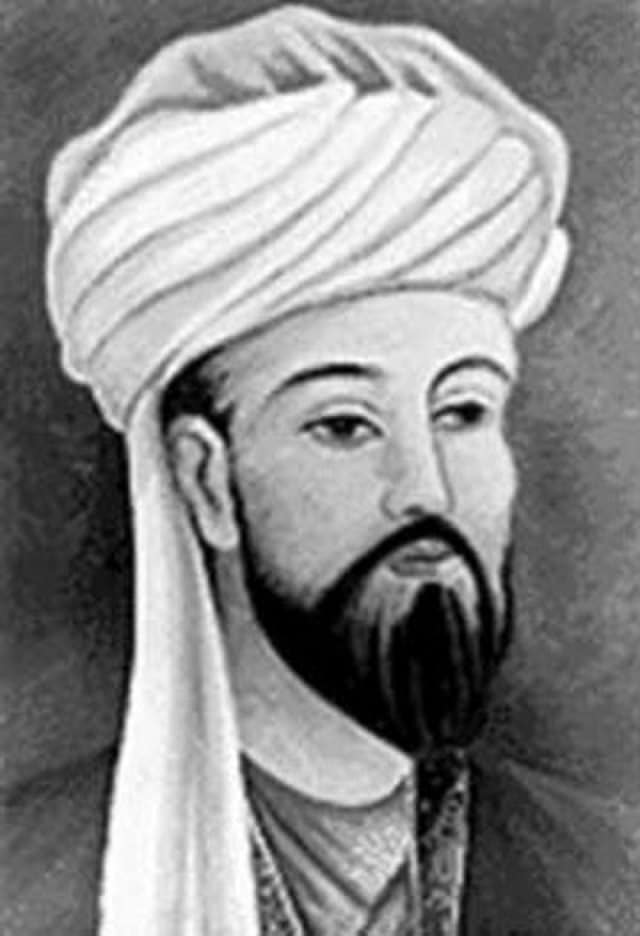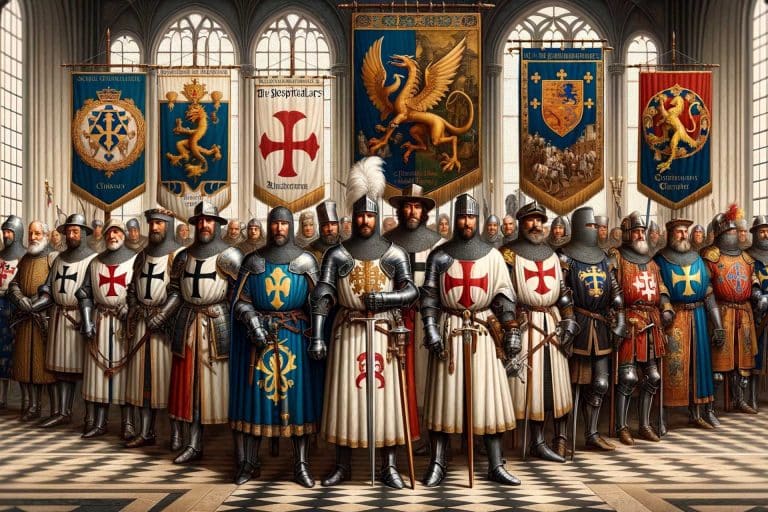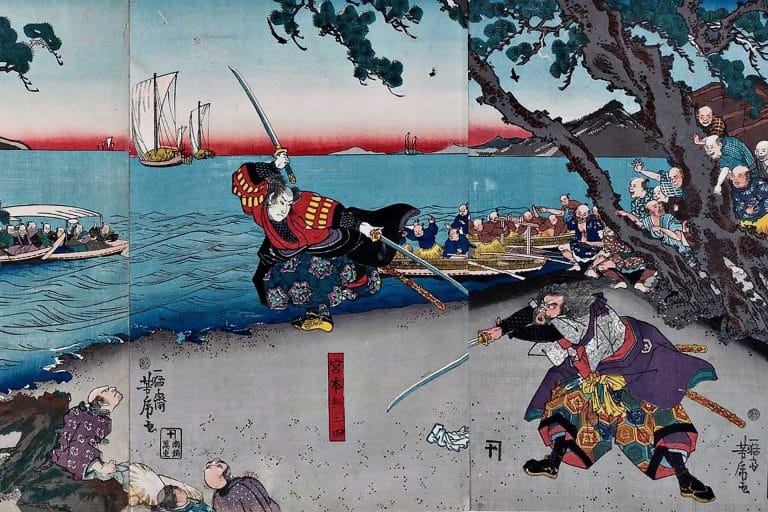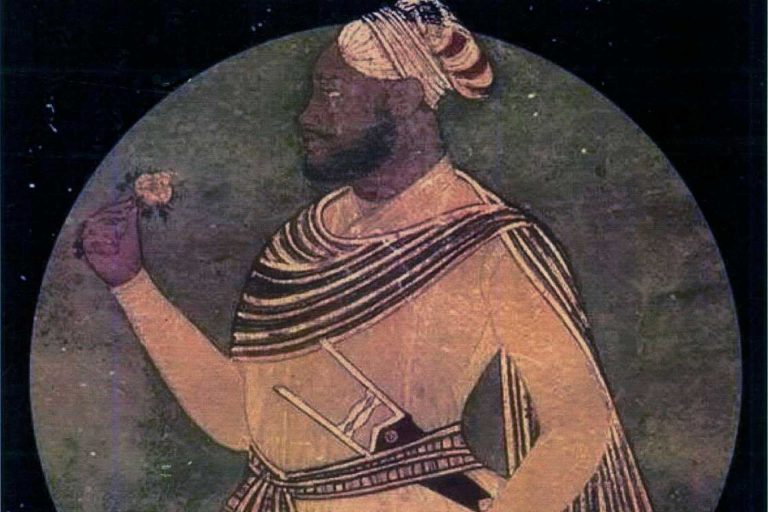Exploring the Order of Assassins: Origins, Evolution, and Downfall
The Order of Assassins, a name that conjures images of shadowy figures moving silently through the medieval landscape, has fascinated historians and the public for centuries. The feared order was also commonly referred to as the Hashshashin. Emerging in the late 11th century during the tumultuous era of the Crusades, this secretive organization established itself as a formidable power broker across the Islamic world and beyond. Rooted in the Ismaili sect of Shia Islam, the Order’s operations extended from Persia to Syria, deploying a unique blend of religious zeal, political intrigue, and targeted killings to advance their objectives and protect their communities from external threats.
The enigmatic nature of the Order, combined with their notorious method of achieving political ends through assassination, has led to a blend of myth and reality in recounting their history. From their mountain fortresses like Alamut in Persia, the Assassins challenged both Crusader states and Muslim empires, inspiring fear and respect. Their downfall in the mid-13th century, at the hands of the Mongol Empire, marked the end of their direct influence. Still, the legacy of the Order of Assassins endures, encapsulating the complexity of medieval power dynamics and the enduring allure of the mysterious.

The Rise of the Order of Assassins
Hassan-i Sabbah’s journey from a scholarly student in Cairo to the mastermind behind the formidable Order of Assassins is a tale of ambition, strategic brilliance, and unwavering conviction. Born in Qom around 1050 to a family with noble Arab lineage, Sabbah’s intellectual pursuits led him to Cairo under the Fatimids’ influence. However, it was in Persia where his legacy would be cemented. By 1090, through a mix of cunning and determination, Sabbah seized Alamut Castle, transforming it into a stronghold for defense and his followers’ indoctrination. His reign at Alamut was marked by the production of religious texts and the expansion of his Order’s influence, utilizing political maneuvering and targeted assassinations to instill fear and loyalty across the region.
The strategic acquisition of Lambsar Castle, under the command of Sabbah’s successor, Kiya Buzurg Ummid, showcased the Assassins’ growing power in northern Persia. Despite their formidable presence, the Assassins strategically avoided conflict with the Crusaders, focusing instead on Muslim adversaries. This period saw the Assassins solidify their power through fortification and assassination, targeting Seljuk officials and rivals to strengthen their position. The reign of Sabbah was notable for its use of assassination as a tool for political and religious objectives, a tactic that would define the Order’s legacy.
As the Order of Assassins expanded their reach, they captured critical fortresses in Persia and Syria, leveraging their newfound strongholds to challenge the Seljuks and spread their influence. Despite challenges, including sieges and internal strife within the Seljuk empire, the Assassins adeptly navigated the political landscape, securing their positions and continuing their mission with strategic assassinations and alliances. Sabbah’s legacy, characterized by a blend of religious zeal and political acumen, laid the foundation for the Order’s enduring mystique and the fascinating chapter they represent in medieval history.

The Mystique of the Order of Assassins: Life, Training, and Beliefs
The Order of Assassins led a disciplined and secretive life characterized by rigorous training and a strict hierarchical structure. Recruits, known as fida’is, underwent intense physical and mental preparation, honing skills in stealth, combat, and strategy that would enable them to execute their missions with precision and devotion. Living within the fortress confines like Alamut; they practiced asceticism, wholly dedicated to the cause under their leader, Hassan-i Sabbah. The Order’s training regimen was focused on martial prowess and included theology, philosophy, and language lessons to prepare the fida’is for their roles as warriors and spies.
At the heart of the Assassin’s creed was a complex belief system derived from Ismaili Shia Islam, intertwined with elements of mysticism. The Order conducted special ceremonies to initiate members, emphasizing loyalty, sacrifice, and the pursuit of divine truth. These ceremonies were designed to reinforce the bond between the members and their unwavering commitment to the Order’s objectives. The hierarchical structure placed fida’is at the base, followed by higher levels of initiates who possessed a more profound knowledge of the Order’s doctrines and secrets, culminating in the leadership of the Grand Master himself.
The reputation of the Assassins was a mixture of awe, fear, and admiration across the medieval world. They were perceived as deadly and unyielding, capable of reaching any target regardless of the protection around them. This fearsome reputation was amplified by their selective targeting of high-profile figures, which they executed with alarming precision. To their enemies, they were a shadowy threat; to their followers, they represented the epitome of loyalty and courage. Despite their eventual downfall, the legacy of the Assassins continues to captivate the imagination, a testament to their profound impact on history and the enduring mystique surrounding their Order.
The Syrian Domain of the Assassins
The Order of Assassins’ ambitious expansion into Syria under Hassan-i Sabbah’s directive marked a pivotal moment in their history. Al-Hakim al-Munajjim, dispatched as the first da’i, skillfully established an Assassin cell within Aleppo, leveraging alliances with local emir Ridwan to solidify their presence. Their audacity was underlined by the murder of Janah ad-Dawla, a significant adversary, signaling their intent and capability to influence regional politics profoundly. This marked the beginning of a period where the Assassins began embedding themselves into the fabric of Syrian society through strategic alliances and ruthless efficiency.
Despite facing formidable opposition, the Assassins managed to maintain their strongholds in the north, demonstrating their resilience and strategic acumen. Through a combination of negotiation, subterfuge, and outright violence, they navigated the complex political landscape of the region. The capture of significant fortresses like Khalinjan highlighted their militaristic capabilities alongside their notorious reputation for assassination. These actions cemented their power within Persia and laid the groundwork for their influence to spread further into Syrian territories.
In Syria, the Order of Assassins’ operations took on a new dimension, with high-profile assassinations shaking the foundations of local rule. Figures like Mawdud, atabeg of Mosul, and even the great Buri, founder of the Burid dynasty, fell victim to their blades, showcasing the reach and impact of their campaign.
Ridwan’s death and Alp Arslan al-Akhras’s subsequent leadership saw a brief respite in their activities. Still, the cycle of violence resumed, underscoring the persistent threat they posed to both local and regional power structures. Through strategic marriages, alliances, and targeted violence, the Assassins entrenched themselves deeply within the Syrian political and social landscape, marking a significant chapter in their storied history.
The Era of Succession and Expansion
Following Hassan-i Sabbah’s death in 1124, the Order of Assassins entered a new chapter under the leadership of Kiya Buzurg Ummid. This transition period did not denote weakness but rather a continuation of Sabbah’s legacy, as evidenced by the strategic expansion and fortified resilience against external threats. The Seljuks, presuming a moment of vulnerability, launched attacks against the Assassins’ strongholds, only to face stiff resistance and tactical reprisals. The Assassins’ adeptness at infiltration and assassination was once again demonstrated with the cunning elimination of the Seljuk vizier Mu’in ad-Din Kashi, underscoring their enduring potency and the futility of confrontation.
Simultaneously, they broadened their influence in Syria, adapting their tactics to the unique political landscape. The strategic murders of key figures, such as the atabeg of Mosul and the Burid dynasty’s founder, showcased their intent to assert dominance and disrupt the prevailing power structures. The Assassins’ covert operations and alliances, notably with Toghtekin and his successors, facilitated their expansion while complicating the Crusaders’ and Seljuks’ efforts to counteract their presence.
The subsequent leadership of Bahram al-Da’i and his successor, Isma’il al-‘Ajami, in Syria marked a period of both achievement and adversity for the Assassins. Their ability to instigate significant political upheaval, coupled with the brutal reprisals they faced, highlighted the volatile nature of their existence. Despite facing expulsion and the loss of key leaders, the Assassins’ strategic assassinations continued to instill fear and respect across the region.
The transition to Muhammad Buzurg Ummid’s leadership after the death of Buzurg Ummid in 1138 did not diminish the Assassins’ resolve or capabilities. Their continued expansion, acquisition of strategic fortresses, and high-profile assassinations against caliphs and viziers underscored their unyielding pursuit of influence and autonomy. The Assassins’ role in the broader geopolitical dynamics of the Middle East, particularly during the Crusades, exemplified their adaptability and the enduring legacy of Hassan-i Sabbah’s foundational strategies.
This era of succession and expansion for the Order of Assassins reinforced their status as formidable players in the medieval political landscape and laid the groundwork for their enduring mythos. Their strategic understanding, coupled with an unwavering commitment to their cause, ensured that they remained a significant force long after the death of their founder, navigating the complexities of medieval politics with a blend of stealth, diplomacy, and targeted violence.
Transition and Legacy: Hassan II to Rashid ad-Din Sinan
Following Hassan-i Sabbah’s death in 1124, the Order of Assassins witnessed a period of transformation under his successors, notably Hassan II and, later, Rashid ad-Din Sinan. The reign of Hassan II marked a pivotal shift from the outwardly militant strategies of Sabbah to a more esoteric focus. Hassan II’s declaration of the qiyāma, or spiritual resurrection, during Ramadan in 559 AH signified a radical departure from orthodox Islamic practices, emphasizing the inner, mystical understanding of Islam over the external adherence to Sharia. This shift not only altered the religious underpinnings of the Assassins but also set the stage for internal dissent and eventual rebellion within the Order.

Rashid ad-Din Sinan, known as the “Old Man of the Mountain,” emerged as a formidable leader, extending the Assassins’ influence into Syria with a blend of political acumen and ruthless tactics. His tenure in Syria was marked by significant successes against both Crusader and Muslim foes, demonstrating their continued relevance in the complex political landscape of the time. Sinan’s strategic use of alliances, as well as his daring assaults on high-profile targets, underscored the Assassins’ adaptability and the enduring legacy of their founder’s vision.
Sinan’s conflicts with Saladin, in particular, highlight the nuanced relationship between the Assassins and the broader Muslim world. Despite attempts on Saladin’s life, a truce was eventually reached, illustrating the pragmatic approach Sinan took in securing the Order’s survival amidst the shifting allegiances of the era. The Order’s role in the geopolitical machinations of the period, from their covert operations in Aleppo to their confrontations with the Templars, showcases their enduring influence and the complexity of their legacy.
Under Sinan’s leadership, the Order maintained its grip on power through political maneuvering and targeted violence. His death in 1193 marked the end of an era for the Assassins, who continued to operate under the guidance of Alamut but with diminishing influence as the Mongol threat loomed on the horizon. The transition from Hassan II to Sinan represents a critical phase in the evolution of the Order of Assassins, reflecting both the adaptability and the ultimate vulnerability of this unique medieval Order.
A New Era under Hassan III
Following the death of Muhammad III, Hassan III ascended as Imam, steering the Isma’ilis toward a period of cautious diplomacy. Hassan III’s notable shift towards Sunni orthodoxy, a strategic maneuver known as Taqiyyah, was aimed at safeguarding the Isma’ilis amidst a hostile environment. His recognition of the Abbasid caliph al-Nasir underscored this pragmatic approach, symbolizing a willingness to forge alliances for survival. Despite these efforts, the Order’s potency as a political and military force waned, marked by a significant decrease in their assassination campaigns.
Under Hassan III’s stewardship, the Order of Assassins navigated the complexities of regional politics with a mix of diplomacy and calculated aggression. The murder of Raymond, the young count of Tripoli, in 1213 underscored the persistent threat the Order posed to regional powers. However, the siege laid by Bohemond IV and the Knights Templar on Qala’at al-Khawabi revealed the limits of their influence, requiring intervention from the Ayyubids to repel the Crusaders. This episode highlighted the Assassins’ precarious position, reliant on external forces for their defense.
Majd ad-Din’s tenure as chief da’i introduced a new dynamic, with the Assassins asserting their autonomy by redirecting tributes from the Seljuk sultanate of Rûm to their coffers. Yet, the sudden death of Hassan III in 1221, under suspicious circumstances, propelled his young son Muhammad III to the helm. Muhammad III’s era was marked by an oscillation between Shia orthodoxy and the practicalities of Mongol encroachment, an existential threat that overshadowed his reign.
The Assassins’ strategic focus shifted as the Mongol threat loomed. Majd ad-Din’s interactions with Frederick II and the negotiations with the Knights Hospitaller underscored their attempts to navigate the rapidly changing political landscape. However, the Order of Assassins’ influence diminished as internal strife and external pressures mounted. The murder of Muhammad III in 1255 and the ascension of Rukn al-Din Khurshah marked the beginning of the end for the Isma’ilis’ political autonomy.
The period from 1210 to 1255 was characterized by the Order of Assassins’ struggle to maintain relevance in a region torn by Crusades, Mongol invasions, and the rise of new dynasties. Despite their efforts to adapt and survive, they could not escape the tides of history.
Legacy of Shadows: The Order of Assassins’ Notable Kills
The Order of Assassins, a name synonymous with stealth and precise political maneuvering, left an indelible mark on history through their targeted killings. Their methods were as varied as their victims were prominent, influencing the course of empires and kingdoms. Below is a curated list of the most significant assassinations attributed to them, detailing the who, how, and the repercussions of these daring acts.
Nizam al-Mulk, 1092, Near Baghdad – The Seljuk vizier was killed by a faux Sufi monk, drastically altering the political landscape of the Seljuk Empire. This act of violence sent shockwaves through the medieval Islamic world, demonstrating the Assassins’ reach and determination.
Raymond II of Tripoli, 1152, Tripoli – Assassinated by a small group of Assassins in the streets, this murder heightened tensions between the Crusader states and the Order of Assassins, leading to a series of fortifications and military actions against Assassin strongholds.
Conrad of Montferrat, 1192, Tyre – Killed by two Assassins posing as monks, the death of this Crusader king led to a power vacuum, a reevaluation of alliances within the Crusader kingdoms, and suspicions of involvement by other Crusader leaders.
Janah ad-Dawla, 1103, Homs – His assassination inside a mosque by Assassins disguised as devotees marked the beginning of the Assassins’ expansion into Syria, thus setting a precedent for their operations in the region.
Al-Afdal Shahanshah, 1121, Cairo – The Fatimid vizier’s death at the hands of the Order of Assassins destabilized the Fatimid Caliphate, leading to internal strife and weakening its position against the Seljuks and Crusaders.
Edessa’s Deputy Governor, 1126, Edessa – Assassinated during a public event; this killing underscored the Assassins’ willingness to strike in Crusader territories, increasing the Crusader states’ military expenditures on espionage and personal security.
Mawdud of Mosul, 1113, Damascus – His assassination disrupted the Seljuk military campaigns against the Crusaders, temporarily easing pressure on Crusader states and reorganizing Seljuk military strategy.
Patriarch of Antioch, 1203, Antioch – Murdered during a liturgical service, this act terrorized the Christian ecclesiastical hierarchy and led to increased security measures within the principalities.
Shah Jalal ad-Din, 1107, Persia – Killed in his private quarters, demonstrating the Assassins’ capability to breach even the most secure of locations, leading to increased paranoia among political leaders.
Caliph al-Amir, 1130, Cairo – His assassination significantly weakened the Fatimid Caliphate, accelerating its decline and affecting the balance of power in the Middle East.
Mu’in ad-Din Unur, 1149, Damascus – The regent of Damascus’s murder led to a power vacuum in the city and influenced subsequent regional power struggles.
Ibn Al-Khashab, 1125, Aleppo – His death, executed in broad daylight, sowed fear among the Order of Assassins’ opponents and led to retaliatory actions against suspected Assassin sympathizers.
Peter the Venerable, 1155, Near Cluny – Though not directly assassinated, his death, under mysterious circumstances after denouncing the Assassins, contributed to the mythos surrounding their reach and power.
Ahmad Sanjar, 1157, Merv – Survived an assassination attempt, but the incident led to a significant shift in the Seljuk’s policies towards the Assassins, including attempts at alliances and negotiations.
Frederick Barbarossa, 1190, Asia Minor – Despite the Holy Roman Emperor’s natural death, it was rumored that he was targeted by the Assassins, illustrating the widespread fear and respect for the Order, affecting the morale of Crusader forces.
Philip of Mahdia, 1153, Mahdia – The ruler’s assassination in his bathhouse exemplified the Assassins’ ingenuity and boldness, leading to a brief period of chaos and power struggles within Mahdia.
Saladin, 1176, Near Aleppo – The unsuccessful assassination attempt against Saladin led to a cautious peace between him and the Assassins, illustrating the complex relationships between the Assassins and the region’s rulers.
Richard the Lionheart, 1191, Near Jaffa – The failed attempt on his life led to increased security measures around the king and heightened tensions between the Crusader states and the Assassins.
Al-Mustarshid Billah, 1135, Near Hamadan – The Abbasid Caliph’s murder by Assassins underlined the dangerous position of even the highest Islamic authority figures, leading to a reevaluation of the caliphate’s strategies towards the Assassins.
Count Raymond III of Tripoli, 1187, Tripoli – His assassination destabilized the region further, contributing to the loss of critical territories to Muslim forces during the subsequent period.
Each of these assassinations not only claimed the life of a key figure but also precipitated a ripple effect, altering alliances, inciting wars, and shifting the balance of power across the medieval world. The Order of Assassins, through these targeted killings, demonstrated their influence on the historical narrative, a legacy of shadows that continues to fascinate and horrify to this day.

The Final Chapter: Collapse of the Assassin Order
The Order of Assassins’ downfall began in earnest in the mid-13th century, marking the end of their influence across Persia and Syria. By 1253, Mongol forces under Hulagu Khan initiated a targeted campaign against the Assassin strongholds, starting with several fortresses and culminating in the significant siege of Maymun-Diz. The capitulation of Alamut to the Mongols in 1256 by Imam Rukn al-Din Khurshah signified the definitive end of the Nizari Ismaili state. This event was followed by the fall of Lambsar in 1257 and Masyaf in 1267, effectively erasing the Assassins from the political landscape.
Despite the Mongol onslaught, remnants of the Assassin order managed to recapture Alamut in 1275, albeit briefly. This fleeting resurgence was quashed, and Rukn al-Din Khurshah was executed, dousing any hopes of reviving their former glory. Interestingly, pockets of resistance lingered, with Gerdkuh holding out until it, too, succumbed. These acts of defiance, though brave, were unable to counteract the overwhelming Mongol force, leading to a permanent loss of the Assassins’ political and military power.
In the aftermath, the Assassins’ legacy took a divergent path. In Persia, the remnants of their once-formidable state dissolved, while in Syria, they adapted by aligning with the Mamluks against the Mongols. Sultan Baibars, recognizing the utility of the Orders, incorporated them into his military strategy, effectively ending their independence. This transition from sovereign power to a subsidiary role under the Mamluks highlighted the drastic shift in the Order of Assassins’ fortunes and influence.
The transition period saw the Order of Assassins attempting to navigate a rapidly changing political environment. Their strategic alliances and subsequent submission to Mamluk authority underscored a significant adaptation from their previous autonomous operations. However, by the late 1270s, the remaining Assassin strongholds were systematically subdued by Baibars, culminating in the cessation of their activities as an independent entity. The assassination of Philip of Montfort in 1270, orchestrated by Baibars, symbolized the final act of the Assassins as a potent force in medieval Middle Eastern politics.
The narrative of the Order from 1210 to 1273 is a testament to the turbulent and transient nature of power dynamics in the medieval period. From wielding significant influence to their eventual downfall and absorption into the fabric of Mamluk’s military strategy, the Assassins’ story is a poignant reminder of the impermanence of power and the inevitability of change.
A Legacy Carved in Shadows
The Order of Assassins, with its complex narrative woven through the medieval tapestry of the Middle East, leaves behind a legacy far transcending its historical confines. Their story, from the strategic brilliance of Hassan-i Sabbah to their dramatic downfall at the hands of the Mongols, encapsulates a saga of ambition, resilience, and eventual dissolution. Today, their mystique endures, permeating pop culture through tales of intrigue and stealth, inspiring novels, films, and video games, where the line between myth and history blurs enticingly.
Their saga, marking the collision of faith, politics, and warfare, continues to captivate and intrigue. While the physical remnants of their fortresses crumble, the Assassins’ historical footprint endures, a testament to their profound impact on the medieval world and their undying legacy in the annals of history and imagination. Through the echoes of their story, the Order of Assassins remains immortalized not just as a historical curiosity but as a symbol of the power of belief and the enduring allure of the mysterious.







